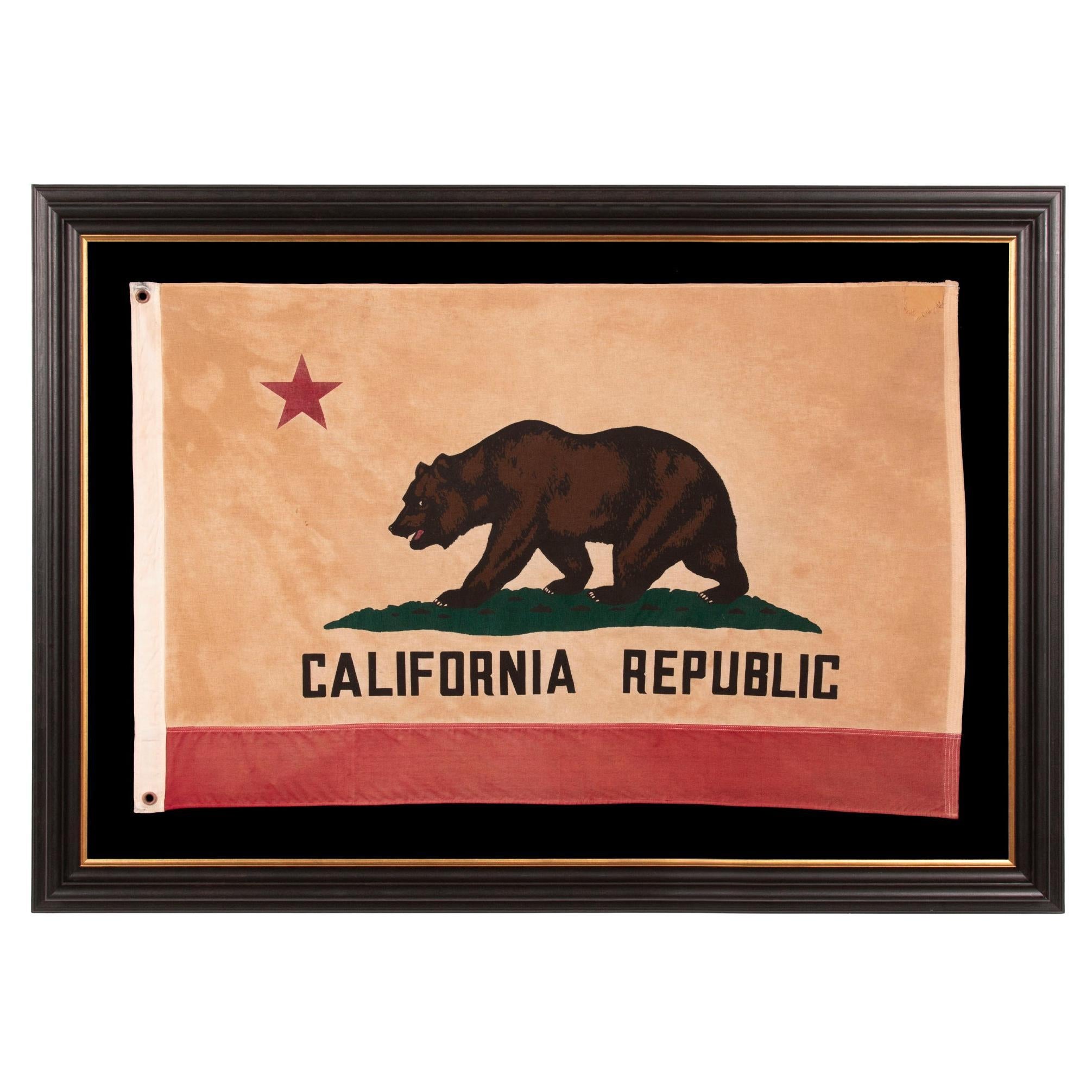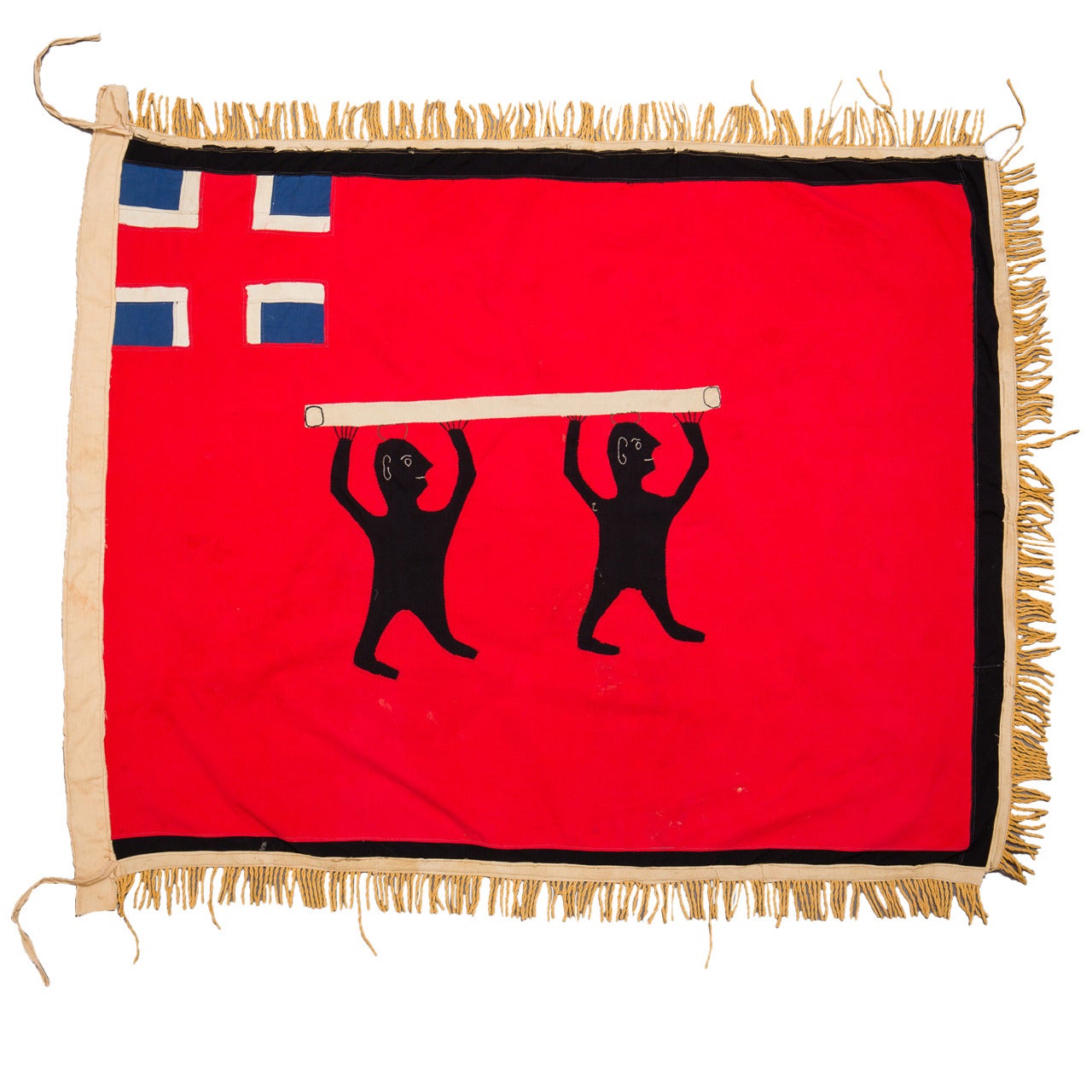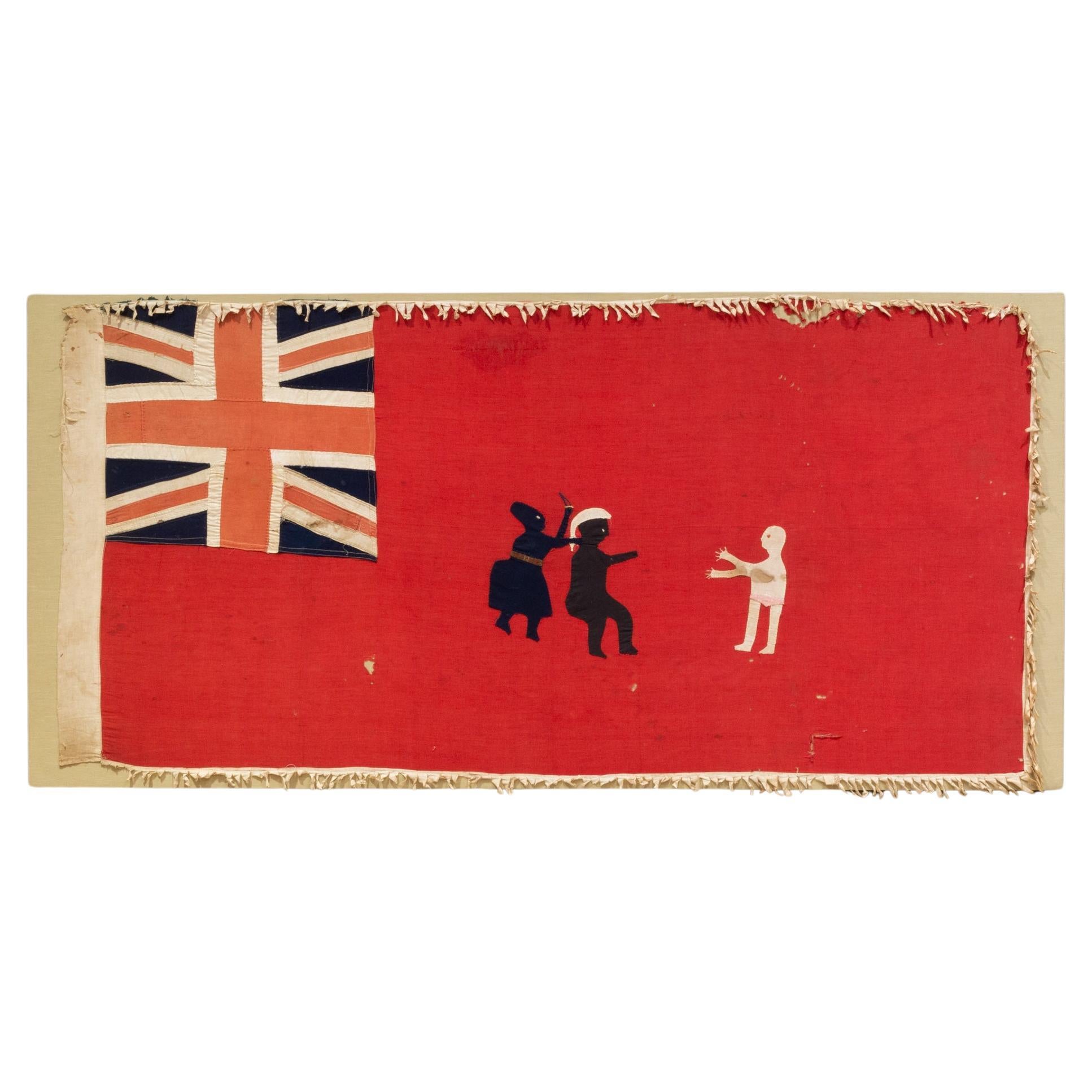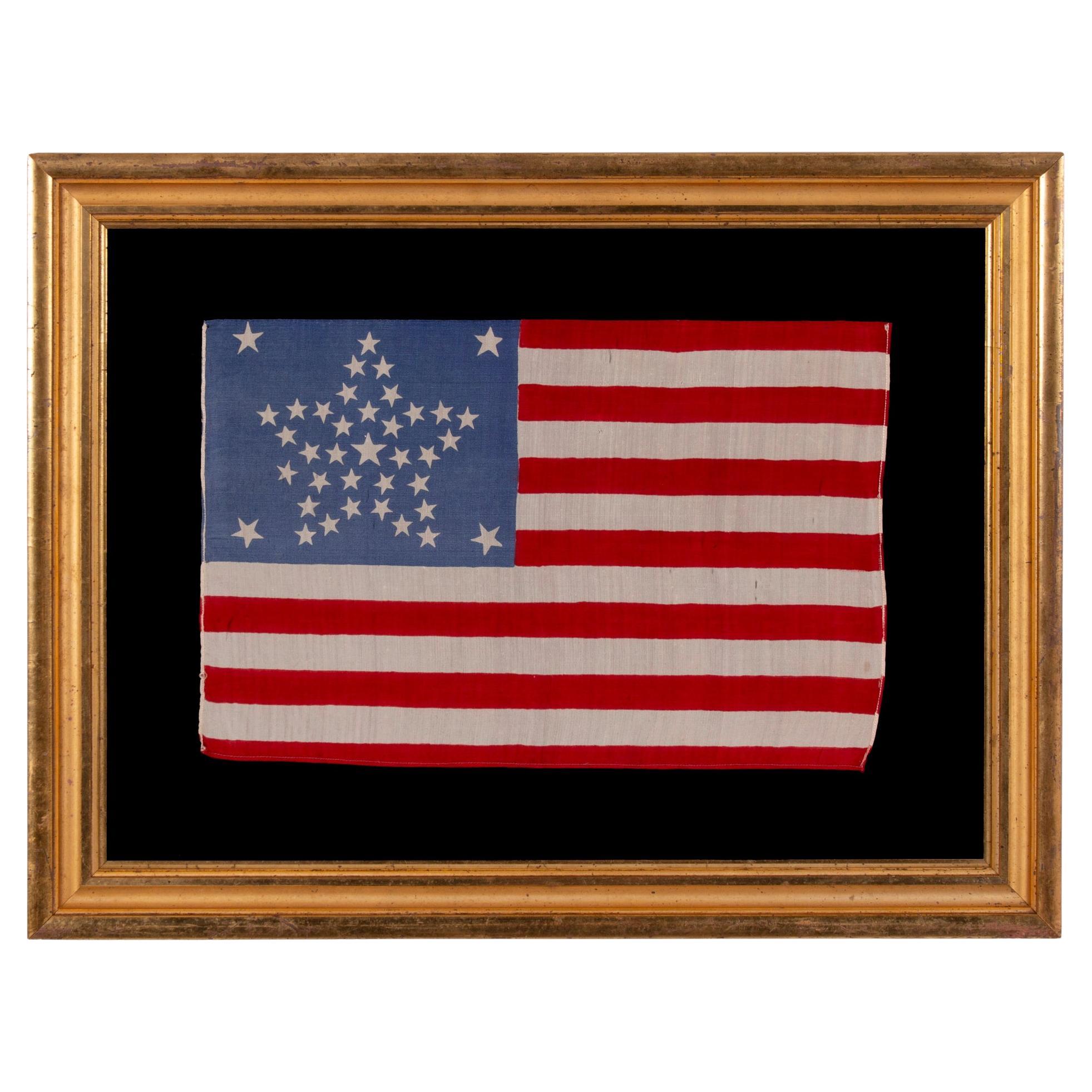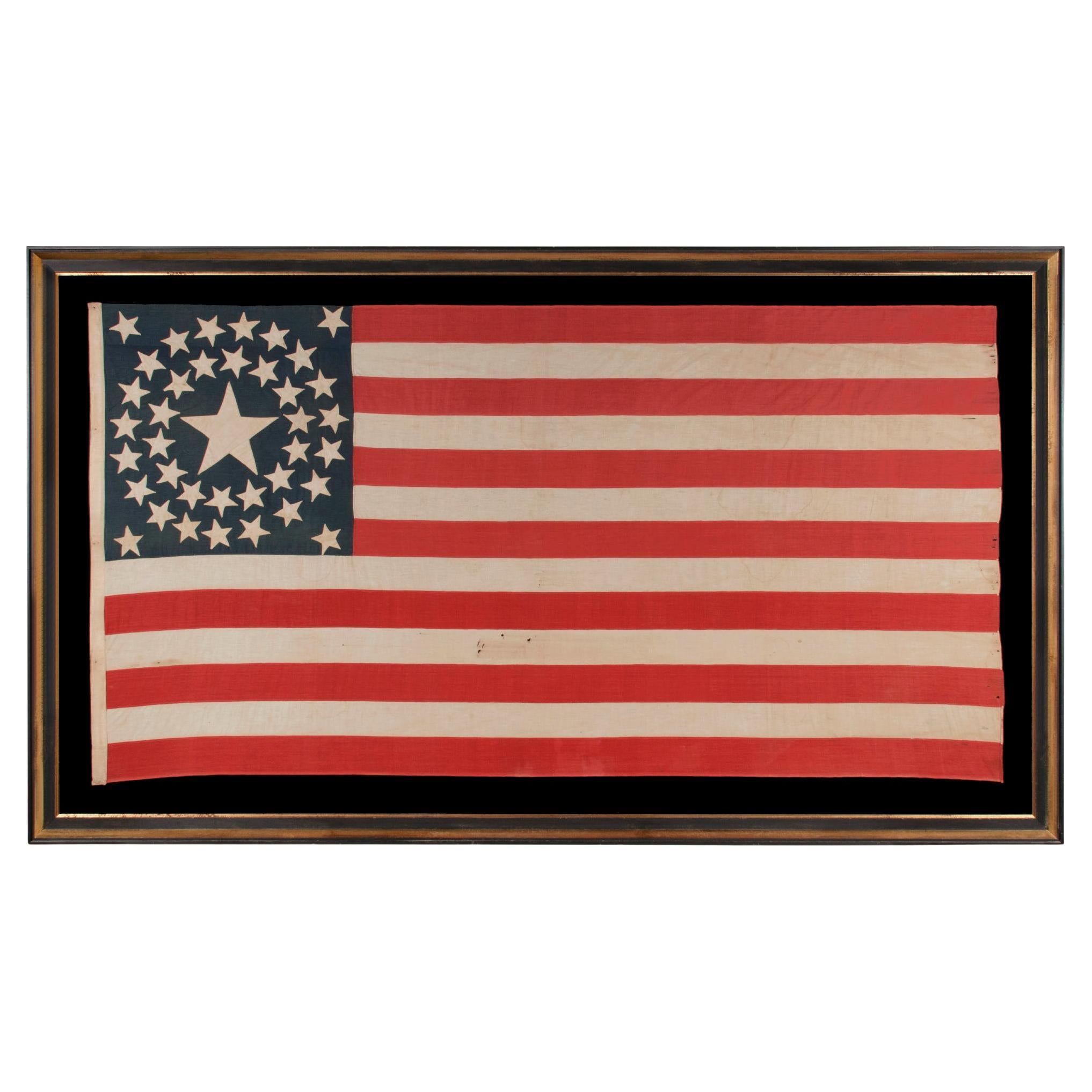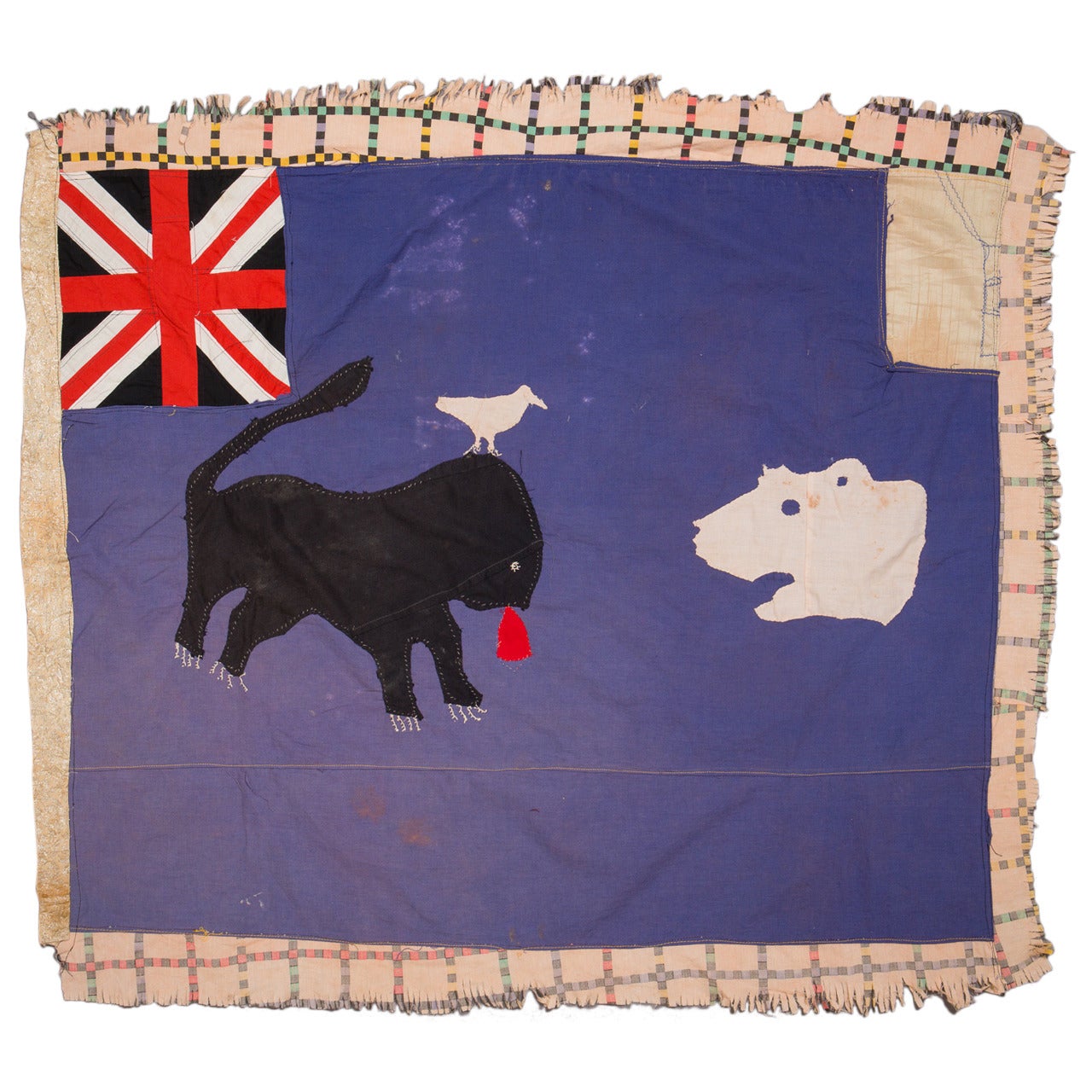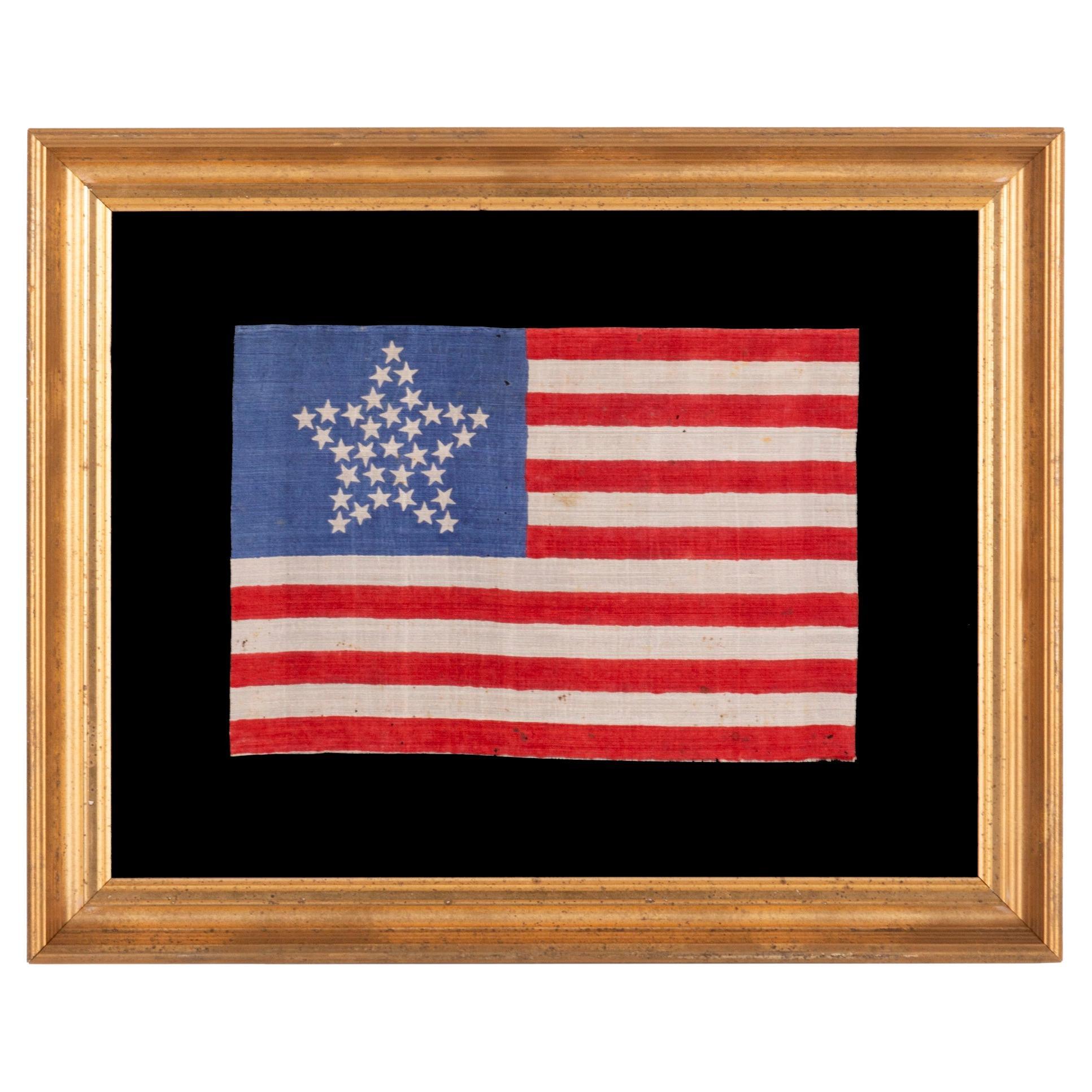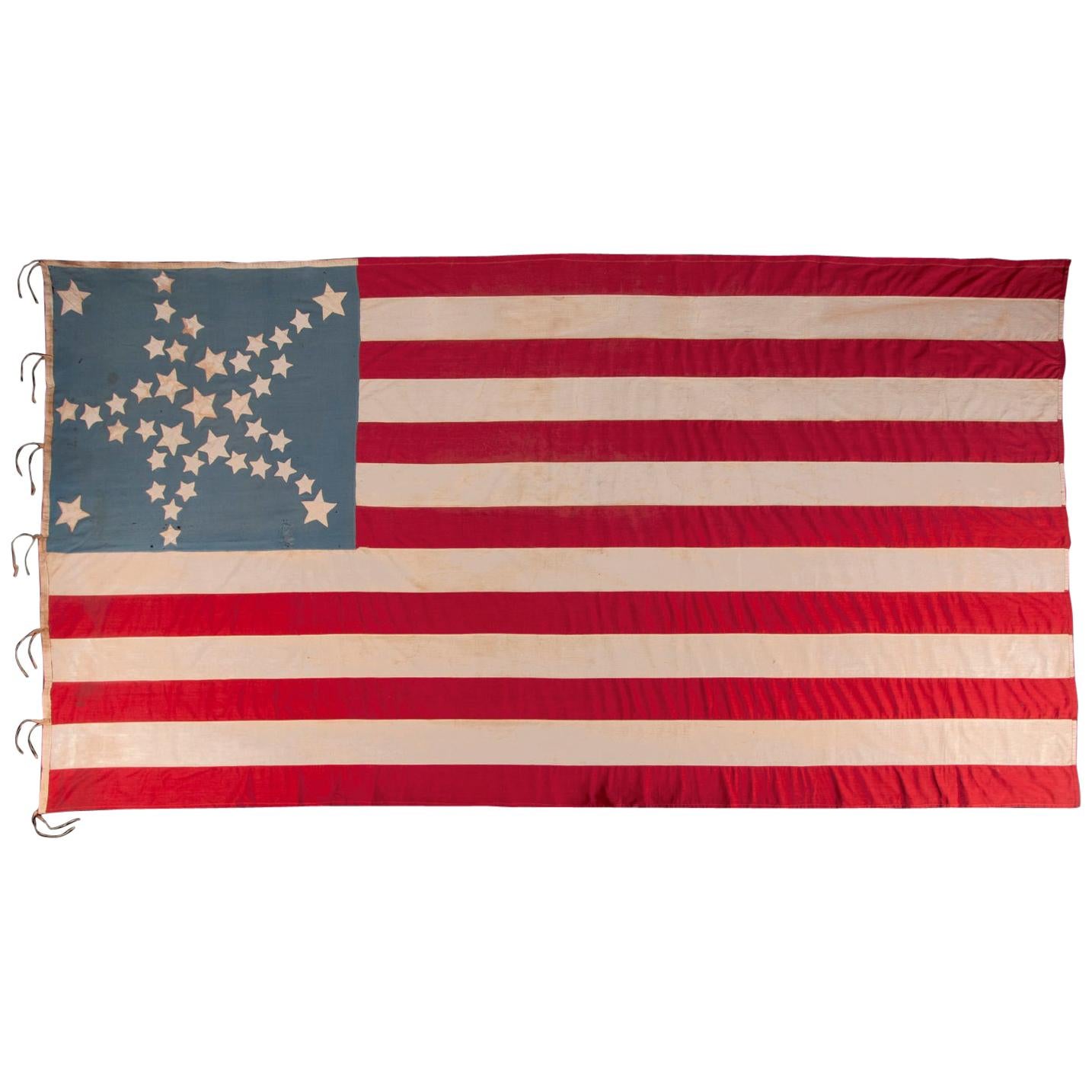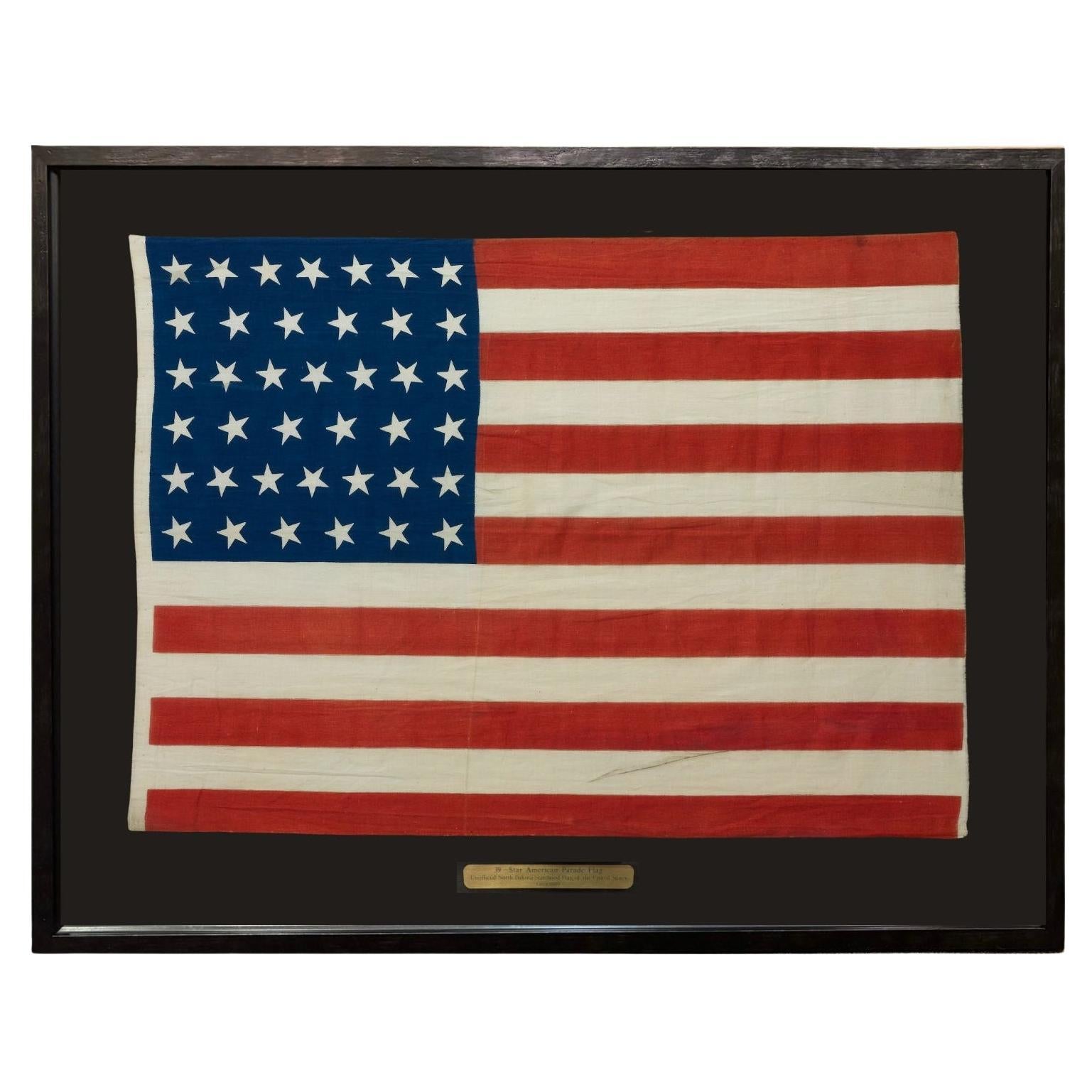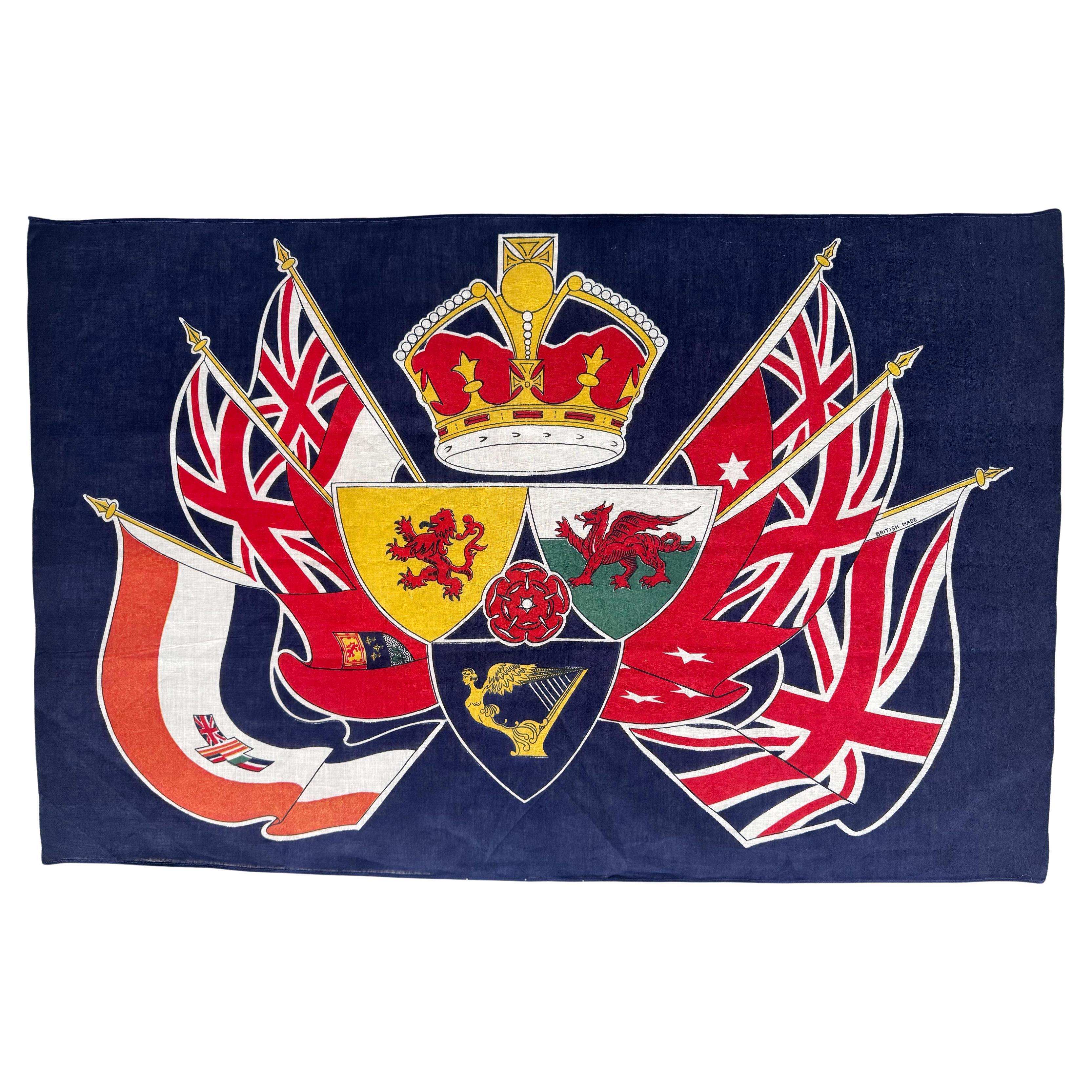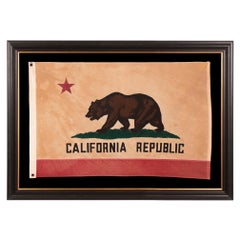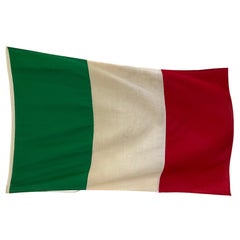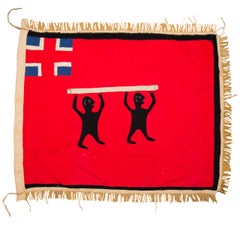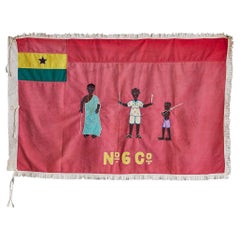
Vintage Kwamina Amoaku Asafo Flag in Cotton Appliqué Pattern, Ghana, 1960s
View Similar Items
1 of 9
Vintage Kwamina Amoaku Asafo Flag in Cotton Appliqué Pattern, Ghana, 1960s
$3,182.28List Price
About the Item
- Dimensions:Height: 40.56 in (103 cm)Width: 61.82 in (157 cm)Depth: 0.2 in (5 mm)
- Style:Folk Art (Of the Period)
- Materials and Techniques:Cotton,Appliqué
- Place of Origin:
- Period:
- Date of Manufacture:1960s
- Condition:Wear consistent with age and use.
- Seller Location:Copenhagen K, DK
- Reference Number:1stDibs: LU1011235050592
Authenticity Guarantee
In the unlikely event there’s an issue with an item’s authenticity, contact us within 1 year for a full refund. DetailsMoney-Back Guarantee
If your item is not as described, is damaged in transit, or does not arrive, contact us within 7 days for a full refund. Details24-Hour Cancellation
You have a 24-hour grace period in which to reconsider your purchase, with no questions asked.Vetted Professional Sellers
Our world-class sellers must adhere to strict standards for service and quality, maintaining the integrity of our listings.Price-Match Guarantee
If you find that a seller listed the same item for a lower price elsewhere, we’ll match it.Trusted Global Delivery
Our best-in-class carrier network provides specialized shipping options worldwide, including custom delivery.You May Also Like
Vintage California State "Bear" Flag, ca 1940-1960
Located in York County, PA
VINTAGE CALIFORNIA STATE "BEAR" FLAG OF STOUT CONSTRUCTION, AND WITH SIGNIFICANT GOLDEN BROWN OXIDATION THAT LENDS TO BEAUTIFUL PATINA AND CONVEYS ITS AGE; LATTER 1940’s - 1960’s
Early state flags fall between very scarce and extraordinarily rare in the antiques marketplace. One primary reason for this is that most states, even if they existed during the 18th or 19th century, didn’t actually adopt flags until the early 20th century. The Maryland State Legislature, for example, didn’t find need for a state banner until 1904, in spite of the fact that Maryland was one of the original 13 colonies. Other states had crests or symbols that were tied to the state legislature in some way, or to local patriotism, but didn't accept an official design until many years following statehood.
In the case of California, the "Bear Flag," as all California state flags and variations thereof are often called, is based on a significant early example. The eldest surviving Bear Flag is thought to date to the 1846 “Bear Flag Revolt”. This occurred when Major John Frémont arrived in the state on a so-called mission to reach the Pacific and encouraged an uprising against Mexican rule in the territory. Frémont claimed himself military governor of the California Republic and was brought up on charges of treason for his actions, but was pardoned by President James Polk. Polk was an expansionist and Frémont’s actions brought California to statehood in 1850, immediately following the 1849 Gold Rush.
The original Bear Flag was designed and made by William L. Todd, a first cousin to Abraham Lincoln’s wife, Mary Todd. Painted on cotton, it had a white field with a red stripe along the bottom, just like the modern design. The star image was taken from what was known as the “California Lone Star Flag”, flown during California's previous, 1836 revolt. Like the modern California flag, the red star appeared the upper hoist-end corner, but the bear was placed next to the star. On a later version, designed by a man named Peter Storm...
Category
Mid-20th Century American Political and Patriotic Memorabilia
Materials
Cotton
Vintage Italian Flag
Located in New York, NY
Vintage Italian flag. Vintage Italian flag made by Serpone & Co. Napoli. Italy, Mid-20th Century.
Approximate dimensions: 38” H X 60” W
Category
Mid-20th Century Italian Mid-Century Modern Political and Patriotic Memo...
Materials
Fabric, Cotton, Linen
20th Century Fante Asafo Flag, Ghana
Located in New York, NY
A large and graphically stunning Fante asafo flag.
Fante flags represent the merger of two cultural traditions, the Akan tradition of combining pro...
Category
Mid-20th Century Ghanaian Decorative Art
Materials
Fabric
Mounted Asafo Flag of Ghana c.1820-1920
Located in San Francisco, CA
ABOUT
Contact us for more shipping quotes: S16 Home San Francisco.
An original Asafo flag depicting the Fante people of Ghana, Africa and the Union Jack of the United Kingdom. Mou...
Category
Antique 19th Century Industrial Signs
Materials
Wood, Fabric
$2,595 Sale Price
20% Off
38 Star American Parade Flags with Stars in a Great Star Pattern
Located in York County, PA
38 STAR AMERICAN PARADE FLAG WITH A RARE AND BEAUTIFUL VARIATION OF THE “GREAT STAR” OR “GREAT FLOWER” PATTERN, 4 LARGE CORNER STARS, & AN ODD OUTLIER, 1876-1889, COLORADO STATEHOOD,...
Category
Antique Late 19th Century American Political and Patriotic Memorabilia
Materials
Silk
Price Upon Request
38 Star Antique Flag, Stars in Double Wreath Pattern, Colorado Statehood 1876-89
Located in York County, PA
38 STAR ANTIQUE AMERICAN FLAG WITH A DOUBLE-WREATH CONFIGURATION THAT FEATURES AN ENORMOUS CENTER STAR, REFLECTS THE PERIOD OF COLORADO STATEHOOD, 1876-1889:
38 star American national flag, made entirely of plain weave cotton. The stars are arranged in a medallion configuration. This features an enormous center star, surrounded by two wreaths of much smaller stars, with a flanking star in each corner of the blue canton. The sort of disparity here, present in the scale of the large star, versus those around it, is both exceptionally unusual and graphically dynamic.
Colorado became the 38th state on August 1st, 1876. This was the year of our nation’s centennial. Per the Third Flag Act of 1818, stars were not officially added until the 4th of July following a state's addition. For this reason, 37 remained the official star count for the American flag until part way through the following year. Flag-making was a competitive venture, however, and few flag-makers would have continued to produce 37 star flags when their competitors were making 38’s. Many flag-makers added a 38th star before Colorado entered the Union, in the early part of 1876, or possibly even prior. In fact, many makers of printed flags, called parade flags or hand-wavers, were actually producing flags in the 39 star count, in hopeful anticipation of the addition of two more Western Territories instead of one.
It is for these reasons that 38, 39, and 13 stars, to representing the original 13 colonies, are most often seen on flags displayed at the Centennial International Exhibition. Hosted in Philadelphia, this enormous event was our nation’s first World’s Fair, lasted for a duration of six months, and served as the nucleus of celebrations held to honor America’s 100-year anniversary of independence. The 38 star flag became official on July 4th, 1877 and was generally used until the 39th state was added in November of 1889.
This is probably a homemade flag, though sewn by a very skilled hand, or possibly, by two different individuals. The stripes are pieced and sewn entirely by hand, with remarkable care and precision. The canton is constructed of two lengths of blue fabric, that have been joined with treadle stitching. This was joined to the striped field by hand. The stars are double-appliquéd (applied to both sides) with treadle stitching. There is a treadle-sewn, cotton binding along the hoist, with five, hand-sewn grommets.
It is extremely unusual to encounter this combination of sewing methods. Soon after the sewing machine was mass-marketed, in the mid-1850’s, flag-makers both public and private made good use of treadle machines, to join stripes, when constructing American flags. During the Civil War (1861-65), most stripes were treadle-sewn. Stars were another matter. Until the advent of electric machines...
Category
Antique Late 19th Century American Political and Patriotic Memorabilia
Materials
Cotton
